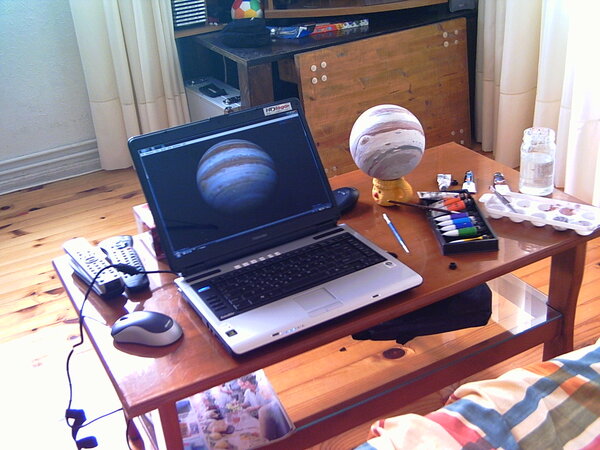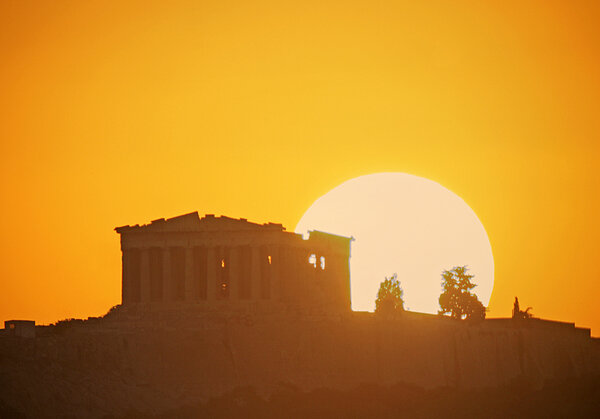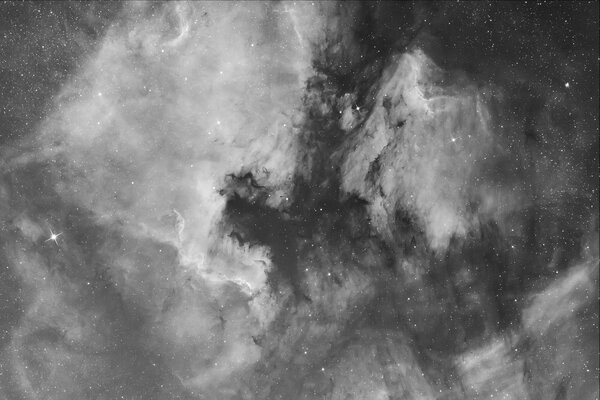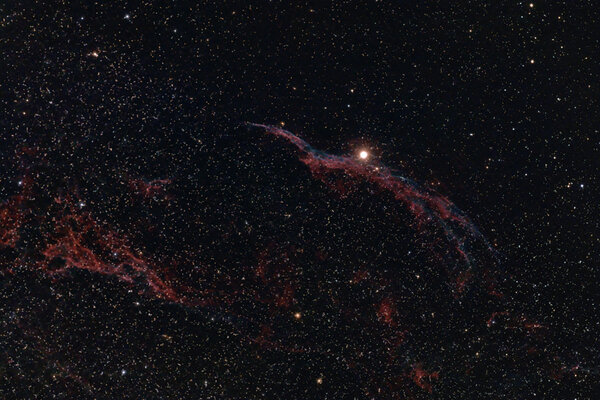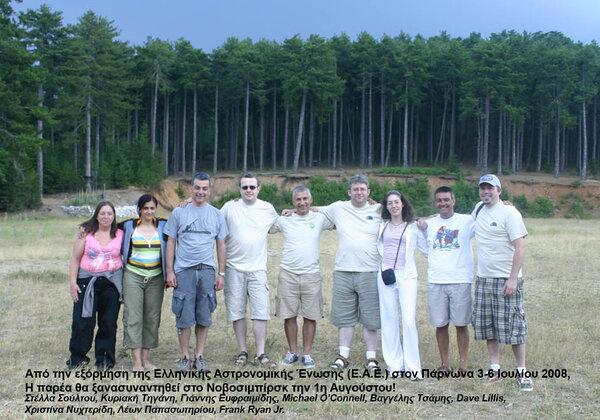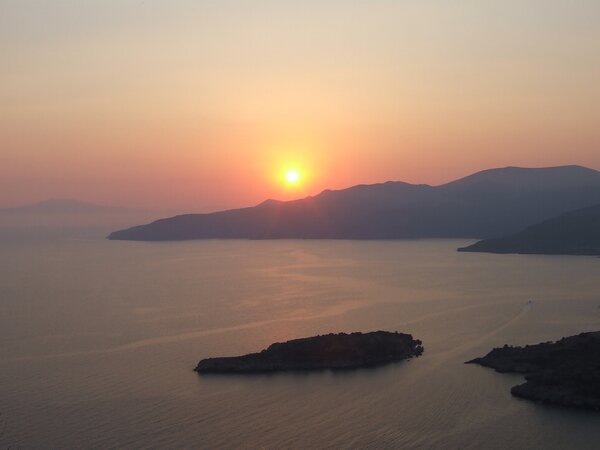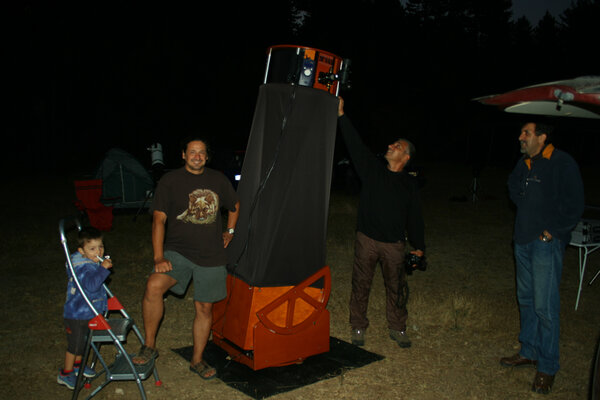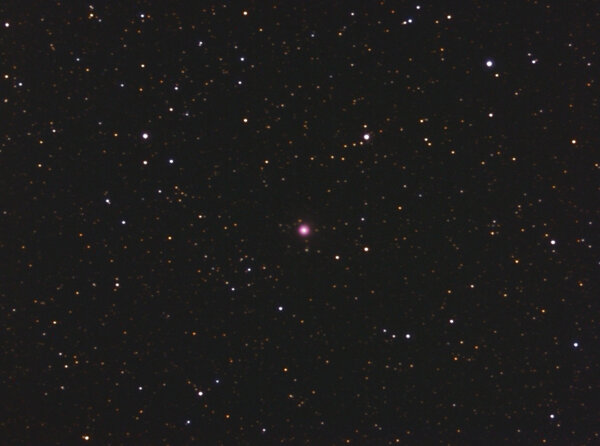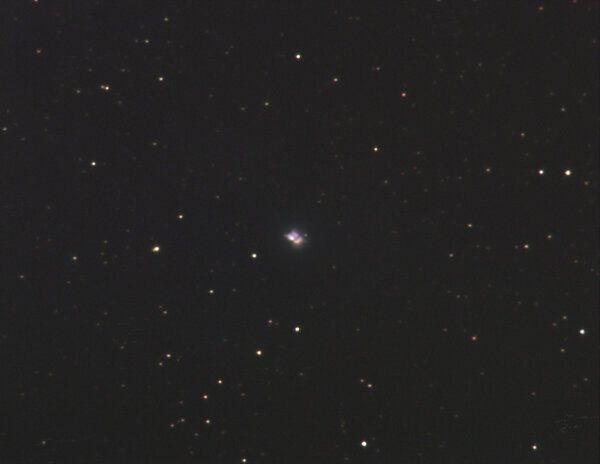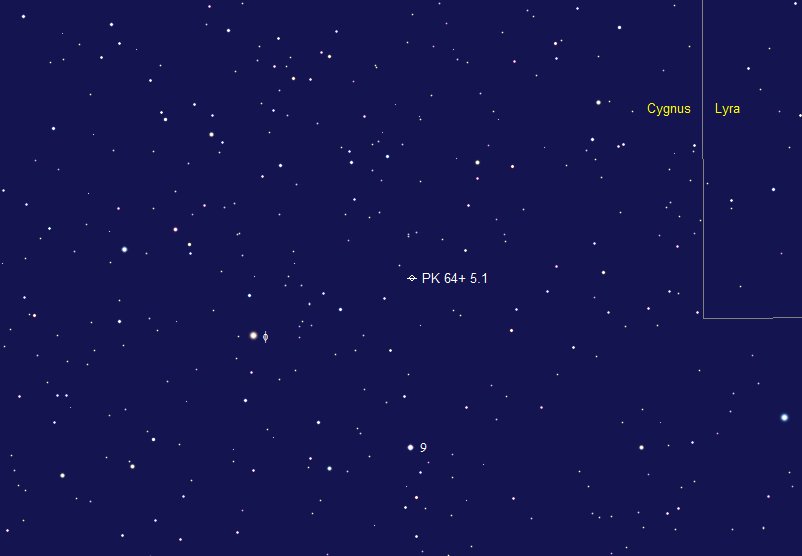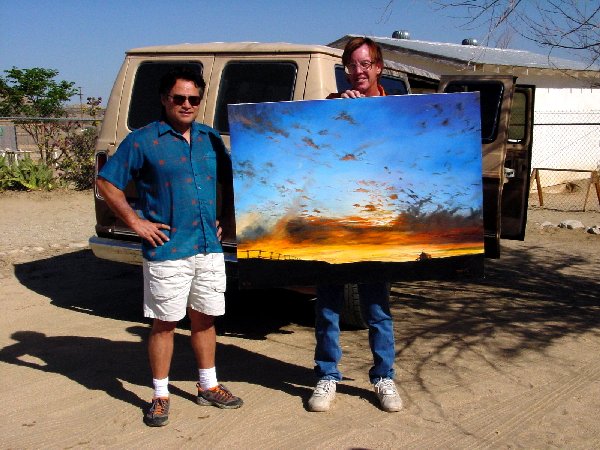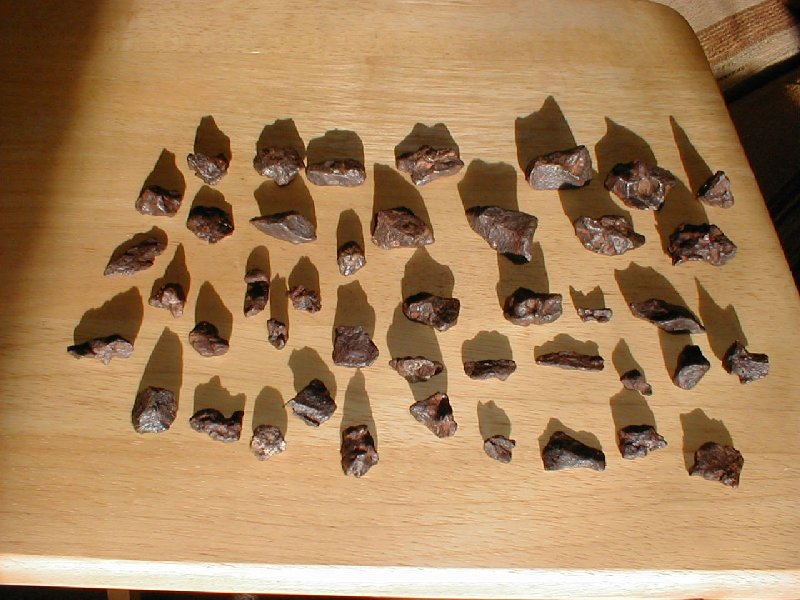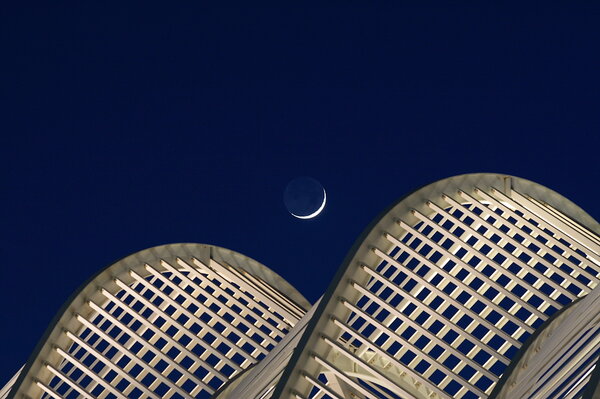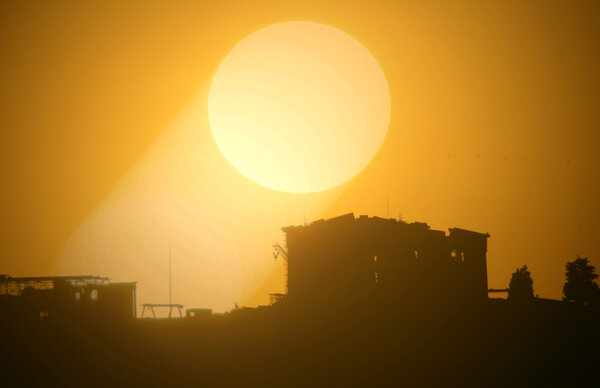-
Αναρτήσεις
1731 -
Εντάχθηκε
-
Τελευταία επίσκεψη
-
Ημέρες που κέρδισε
1
Τύπος περιεχομένου
Forum
Λήψεις
Ιστολόγια
Αστροημερολόγιο
Άρθρα
Αστροφωτογραφίες
Store
Αγγελίες
Όλα αναρτήθηκαν από Fred Ley
-

Κατασκευή πλανητών σε κλίμακα μεγέθους
Ο Fred Ley σχολίασε σε nikos1 για αστροφωτογραφία Αστρονομικές δραστηριότητες
-

Ανατολή Ηλίου και Παρθενώνας
Ο Fred Ley σχολίασε σε ammonite για αστροφωτογραφία Ήλιος wide field (ηλιοβασιλέματα, τοπία κτλ)
-
-
-

Από τον Πάρνωνα στο Νοβοσιμπίρσκ!
Ο Fred Ley σχολίασε σε Γιάννης Ευφραιμίδης για αστροφωτογραφία Αστρονομικές δραστηριότητες
-
Hi Draculas, You were able to obtain a very nice sunset. I was in the Mani on July 1-4, staying at Areopolis. Yes, the humidity was terrible. The temperature was nice though. I hope to be able to return for a visit in the winter when it is cooler and I hope by then that the humidity will be way lower. -Fred
-

Milky Way from Mount Parnon
Fred Ley απάντησε στην συζήτηση του/της Barberskum σε Λήψη αστροφωτογραφίας deep sky
Hey, real nice. I would be perfectly happy if an image that I took turned out like yours. Thanks for sharing. -Fred -

Αστροπαρατήρηση/Κιθαιρώνας :ΣΑΒΒΑΤΟ 12 ΙΟΥΛΙΟΥ 2008
Fred Ley απάντησε στην συζήτηση του/της Andreas72 σε Εξορμήσεις και τόποι παρατήρησης
At least you don't have to deal with a mosquito issue-I hope. Them boys can get hungry at night. -Fred -

Εφημερίδες + Ερασιτεχνική Αστρονομία
Fred Ley απάντησε στην συζήτηση του/της Alexander σε Η αστρονομία στην Ελλάδα
Very nice, it reminds me of when I was 13 and started out doing astronomy here in Athens. There were just a few persons, that I knew then, that did astronomy. I do have some old Greek newspapers with astronomy and space related articles from back then. -Fred -
Hi George, That sounds real interesting. Unfortunately, I don't have acsess to the sky from where I live. Perhaps George S. can obtain a few estimates too. I will check at the AAVSO web site to learn more. -Fred (LEF)
-

Πάρνωνας 1,2,3 Αυγούστου
Fred Ley απάντησε στην συζήτηση του/της ngc4565 σε Εξορμήσεις και τόποι παρατήρησης
Hey Frank, Sounds like a plan. If I can make up there, I'll be there. Just don't have any transportation at the present time to bring myself and a scope. I'll check with a buddy and see if he is interested in going. Oh yeah, this is the middle of fire season and persons, as most probably already know, should refrain from smoking and having open fires. All it takes is one spark to ruin a day. Hey, I wonder if they have outhouses up there and/or does everyone chip in and rent a couple? -Fred -

Φαρμακόπουλος - Τσάμης με το 20" του Γιώργου Νικολιδάκη
Ο Fred Ley σχολίασε σε Φαρμακόπουλος Αντώνης για αστροφωτογραφία Αστρονομικές δραστηριότητες
-

Campbell's Hydrogen Star
Fred Ley απάντησε στην συζήτηση του/της Fred Ley σε Παρατήρηση Βαθύ Ουρανού
Hi Manousis, I just noticed that Dimitri Kolovos has posted an image of the star today. It came out really nice. Perhaps you could get in touch with him and see if he has any pointers he could share with you on locating it. From what I have read, the OIII filter is the filter to use on planetaries. I don't know what kind of sky conditions you have in your area, the dark seeing adaptability of your eyes and aperture of the telescope that you use. Naturally they all play a role. Perhaps you could use the image that Dimitri took as a guide. I don't know what the actual field of view is, but one might be able to determine it by using an atlas. Hope that you locate it. -Fred -

PK 64+5.1 (Campbell's Hydrogen star). Αφιερωμένο στον Fred Ley
Ο Fred Ley σχολίασε σε dimikolgr για αστροφωτογραφία Νεφελώματα
-

Campbell's Hydrogen Star
Fred Ley απάντησε στην συζήτηση του/της Fred Ley σε Παρατήρηση Βαθύ Ουρανού
Glad the two of you found this of interest. -Fred -

Double Stars - Όλες οι εκδόσεις
Fred Ley απάντησε στην συζήτηση του/της B.D. Foxmoor σε Αστρονομικές Εκδόσεις
Hi Nompi, As Angellos pointed out, there are quite a few excellent texts on the market to purchase. I have copies of the Webb Society book on Double Stars and the Observing Visual Double Stars by Paul Couteau. The indispensable Burnham's Celestial Handbook is another good choice. I find the Webb Society book to be full of good information for an introduction to doubles. I am not familiar with the other texts listed on the web site that Angellos mentioned. The Webb Society book is 120 pages in length. Its table of contens is thus... Part One Introduction (page 1) 1. A Brief History of Double star Observing (page 5) 2. Types of Double Stars (page 13) 3. Observing Method (page 17) 4. Recording Observations (page 25) 5. Micrometers for Double Star Measurement (page 31) 6. Photography of Double Stars (page 49) 7. Brief Biographies of Double Star Observers (page 59) Part Two A Catalog of Double Stars for Amateur Observers Introduction (page 73) (i) Measures (page 77) (ii) Notes (page 100) References and Bibliography (page 117) The Webb Society book is softcover and cost $7.50 in 1982. I do not know what the current price is. The BAA (British Astronomical Association) in its Deep Sky section, has a Double Star Advisor. The web site is at http://britastro.org/baa/component/option,com_frontpage/Itemid,1/ They may also be of aid to you. I have enjoyed looking at star double stars off and on over the years. The challenge is to see how close a pair ones telescope will split under very good seeing conditions. Yes, those terrible seeing conditions-as we all know to well. If you end up buying one of the newer books, let us know what you think of it. I wouldn't mind buying an updated work on double stars. -Fred PS- I forgot to add the link to the Double Star Section of the Webb Society in Britain, it is... http://www.webbdeepsky.com/notes/doublest01.html -
-
With the constellation Cygnus being one of the major constellations that dominate the summer sky I would like to point out an obscure little planetary nebula. Campbell’s Hydrogen Star, which is, located about 2.5° north of the well-known double star Alberio. It is not shown on many contemporary atlases. The Burnham’s Handbook makes no mention of this planetary in the Cygnus section. In my Deluxe Edition of Tirion Sky Atlas 2000 a small planetary is shown in the vicinity. I do not know if it is referring to this particular planetary nebula. In Steven J. Hynes book Planetary Nebula, the following information is given for this planetary on page 158. Coordinates for 2000.0 are RA 19h 34.76m Dec +30° 30.6¢ The nebula itself is given a magnitude of P 9.6 and V 11.3 It is listed as a type IV and having a diameter of 8 seconds. The star is magnitude 10.00 and its spectral classification is WC9. The name is HD 184738. The following information and chart are from skynightinfo.com and seems to succinctly sum it up. “Herschel never saw PK 64+5.1, nor does it belong to the NGC. Its position is not plotted on many sky atlases and most modern observing guides let it pass without notice. What is this planetary? In 1893, the American astronomer William Campbell was observing through a visual spectroscope at Lick Observatory, when he happened upon this strange object in southern Cygnus. From its spectrum it was clearly not an ordinary star, but rather a tiny planetary nebula. Today we know it as Campbell's Star, although it is labeled on most maps as PK 64+5.1, a designation from the Catalogue of Galactic Planetary Nebulae. Even though it is visible with small telescopes, Campbell's Star is only recognizable as a planetary when viewed with moderately high magnification. Because PK 64+5.1 is only 5" across, an 8-inch reflector at 200x reveals just a small, 9th-magnitude grayish disk. Larger telescopes equipped with an OIII filter will also show the nebula's 11.3-magnitude central star.” Please take not that there is a subtle difference in the magnitude and diameter as given by the book and the web site. I enjoyed looking at this object for the first time through a rather large telescope, the historic 60-inch on Mt. Wilson, in 2003. Naturally the bigger the instrument the brighter the image and the better the resolution-provided that the atmosphere is stable. If anyone observes this little fellow I would be interested in hearing about their experience. -Fred
-

Ιαπωνική απάντηση...
Fred Ley απάντησε στην συζήτηση του/της B.D. Foxmoor σε Πού και πώς να αγοράσω;
Hi Angelos, Thanks for relaying the message from Barry. I'll have to give him a call and see what he is up to these days. As to the Orthoscopic eyepieces... Those Orthoscopic eyepieces appear to have a circle with the letter "T" inside it. The Circle T Orthoscopic eyepieces have been around for years. I have a 6mm and an 18mm that I got back in 1978. They go back even further, the exact date that they were introduced is not known to me. They are good eyepieces though. I hope that I have correctly interpreted the gist of the last few e-mails on this topic. -Fred -

Ιαπωνική απάντηση...
Fred Ley απάντησε στην συζήτηση του/της B.D. Foxmoor σε Πού και πώς να αγοράσω;
Hi Angelos, Great to hear hear that you have some "goodies" on the way to you from Barry. I always like the anticipation in knowing that something fun is making its way to me through the mail. Many years ago I ordered a sun screen for my 2.4-inch Polarex (Unitron) refractor from the dealer in Athens. The box, which I still have to this day, has "VIA SIBERIA" written on it. I guess it went my train part of the way from Japan to Greece. Just an interesting little bit of information. By the way, that was back in early 1972. Glad you enjoyed my little web site. I plan to add more to it as time rolls on. -Fred -

Ιαπωνική απάντηση...
Fred Ley απάντησε στην συζήτηση του/της B.D. Foxmoor σε Πού και πώς να αγοράσω;
Hi Angelos, Hey, you have discovered Barry's site in Kyoto. I have known Barry for many years and he is a great guy. Below is a photo of Barry and known space artist Tom Hames at my home in southern California. Actually, you can see some of Tom's paintings hanging in Barry's store when looking at his web site and on my web site at www.instrumentsoflight.com Over and out, -Fred -

Ηοbby:Κυνηγός Μετεωριτών
Fred Ley απάντησε στην συζήτηση του/της Tilemachos Athanasiadis σε Παρατήρηση κομητών, αστεροειδών, μετεώρων
Hi Kyriakos, I don't think that you need to be overly concerned as to the authenticity of the Canyon Diablo meteorite that you purchased on EBAY. I have not had any negative experiences with any meteorite purchases. The image below shows a few Canyon Diablo meteorites. They come in all sorts of wild shapes-each one unique and they are considerably heavier than a rock of the same size. -Fred -

Τεφρώδες φως πάνω από την Ολυμπιακή Αψίδα.
Ο Fred Ley σχολίασε σε Ηλίας Χασιώτης για αστροφωτογραφία Σελήνη wide field
-

Επανακυκλοφορία Περιοδικού Night Sky
Fred Ley απάντησε στην συζήτηση του/της ΜΩΥΣΙΑΔΗΣ ΓΙΑΝΝΗΣ σε Αστρονομικές Εκδόσεις
Hi, By coincidence, I happen to pick up a copy from my local kiosk this morning. I happened to see the cover and decided to grab a copy. Good stuff inside, now to navigate the technical aspects of the Greek language. Let me go and find my dictionary... -Fred -


